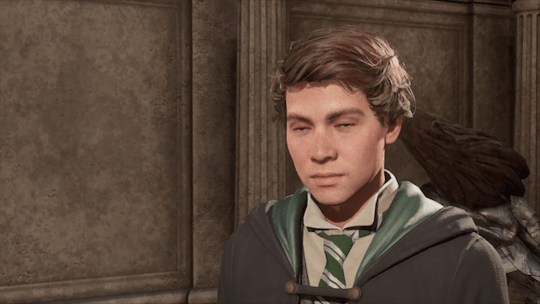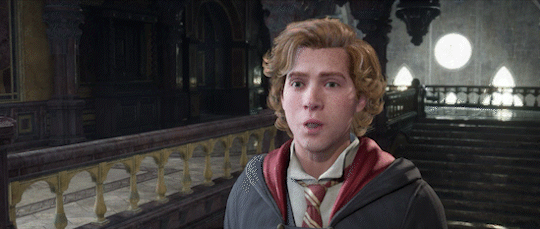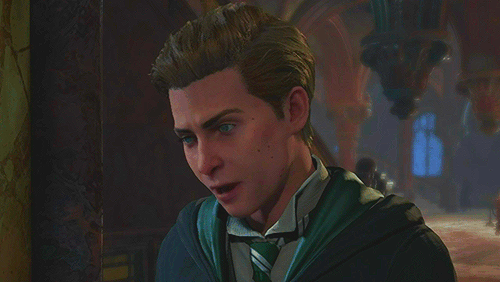Don't wanna be here? Send us removal request.
Text
Yuuki Kuran could have been such a great character.
The concept of a born (Pureblood) vampire being sealed into a human at five years old is potentially fascinating.
They should have explored that concept more in the canon instead of centralizing a story around a stupid love triangle.
But what if she figured out her brother was her ancestor when she was three years old and refused to abandon him?
What if her fierce love for Kaname Kuran had caused her to unconsciously alter Juri Kuran’s spell? What if she kept her memories? What if she consciously spent the next decade of her life maintaining her human mask? What if only a sealed Pureblood vampire’s ancestor can unseal them?
What if she asked Kaname to drink her blood when she was ten years old, and he kept drinking her blood? What if Yuuki Kuran is the white queen Kaname Kuran keeps off the board?
What if I’m writing a fanfiction which includes these concepts and I’m calling it Vampire Chess?
#yuuki kuran#kaname kuran#Sayori Wakaba’s mother will be from an old vampire hunter family in this fic.#Human Yuuki Kuran becomes Yumiko Wakaba’s ward.#Yumiko is the name of Sayori’s mother. I decided that she needed a name for the purposes of this fic.#my therapist knows about this#ao3 fanfic
6 notes
·
View notes
Text
Reblogging so I can remember this.
Courting rules in the 1890's and Hogwarts students

Courting: be involved with (someone) romantically, with the intention of marrying.
I love reading time accurate fanfiction and decided to delve into the courting rules of Victorian England, more specifically the late 1800's. I twisted some rules to add my personal interpretation of how these habits would work for Hogwarts students. This post is specifically about courting, not casual dating. Please keep in mind that the 1890's weren't as progressive as the 2020's while reading and that this discusses middle- and working-class families. This post will probably be subject to additions when I learn even more about Victorian England.
English isn't my native language so I hope the grammar isn't too bad? Let me know!

Meeting someone new.
Typically, teenagers were allowed by their families to begin courting between the ages of 16 to 18, though their education always came first. Girls were taught at home by their mothers to prepare meals and take care of the household. Boys were taught to work with their fathers at home or at the local workshops so they knew how to handle enterprise. During the summer months, Hogsmeade had more soon-to-be sixth-years working the shops than the actual owners.
In September, sixth-years were taught sexual education by the school nurse. She was aided by the potions professor, who taught the girls how to brew a simple contraceptive. Boys were taught their valuable role in society, and how important it was that they did not court multiple girls at a time. It was the boy who had to make a move, so to speak. Victorian women had a more helpless image than they do today, seen as delicate flowers who needed men to take charge.
A girl who was kind, patient, benevolent, peaceful, charitable, and caregiving, was worth pursuing. Girls were to pursue boys who possessed the ability to speak with ease, respect, and courtesy to all, a neat appearance, excellent manners and respect for all women.
The two sexes didn't mingle much. Students would often stay within their own circle, only befriending peers in their own house and classes. The only times that Hogwarts students really had time to meet someone new was during their walks in the hallways, study time in the library or on their trips to Hogsmeade. Therefore, students would often join extracurricular clubs to widen their circle like Quidditch, the school choir, the Astronomy club, Crossed Wands, etc.
Students taking Defense Against The Dark Arts were to follow rules when dueling with the other sex. Boys weren't permitted to use Depulso or other blasting charms at their female peers unless specifically asked for by the professor as it was ungentlemanly to launch a female into a stack of crates without reason.

Dating and falling in love.
If he perceived that she was interested, and he was confident that his position in life and circumstances were sufficient to allow him to proceed, a boy took the next step — sending an owl to the girl's father (or his next-in-line if he had died or was absent from the family) to ask permission to pay a visit to their home. In this letter, he stated his position and prospects, and mentioned his family, as well as his blood status and house. Boys would often pen down what electives they were taking and which profession they would like to pursue after graduation. The letter's envelope would be sealed with a wax stamp of the boy's house or family crest.
Families played a crucial role in the courting process. Parents often had a say in their children's relationships, and the approval of both families was considered important.
If the father of the girl had approved of the young boy, courtship could commence. Most courtship was conducted exclusively in public places and always in the company of a chaperone. Note that I'm discussing romantic and not platonic relationships. Girls and boys were allowed to spend time together alone platonically, under the clear pretence they weren't courting.
The lovers weren't officially allowed to give their suitor any gifts without her parents being present during the exchange. Though it wasn't uncommon for boarding school students to hide lockets under their pillows and dried flowers in their journals, hoping the house-elves wouldn't find them. Flowers, fruit and non-explosive candy from Honeydukes were allowed to be given without supervision, as their perishable nature implied no greater enduring memorials.
With the many rules society put on courting teenagers, love letters were one way to escape the prim and proper manner at which they conversed. Love letters were considered sacred and sincere testaments to a couple’s love; such intimate correspondence was regarded with respect and a deep sense of privacy. A family member would never open a daughter’s or sister’s love letter. Upon receiving an owl she were to retire to her room to read its contents in private.
Often times girls would scent their letters with their perfume and moving portraits were popular attachments. Photography wasn't popularized in working-class families until the next century, yet witches quickly gossiped about conjuration spells that allowed them to take small polaroids of themselves. Boys would attach the dried flowers I mentioned earlier. The more experienced wizard could include a conjured paper butterfly or bird.
Staying at Hogwarts, students weren't allowed in the other gender's dormitories, so they resorted to explicit portraits and sneaky snogs in the Astronomy Tower or the Muggle Studies classroom. Gifting each other their scarf was a discreet way of "claiming" each other, though it was considered improper by the professors.
After having learned the disillusionment and silencing charms, teenagers were very eager to master Evanesco.
The more cunning wizards and witches of Hogwarts would sneak into the Restricted Section of the school's library to look for Muggle books that contained erotica in order to spice up their love letters and late-night encounters.
If allowed by her family, male students would accompany their date to the Yule Ball. They were instructed to never lose sight of her there and to not drink any alcohol in her presence. The couple was also required to arrive in separate carriages and left the event separately before midnight. The boy would walk his lover to her carriage or to her chaperone and bow his head to say goodnight.
As graduation approached, boys who were in the process of courting were sat down by their father figure who explained the importance of marriage. The boy was expected to start thinking of proposing to his lover.

Getting engaged.
Though courtships were short and often only lasted less than a year, engagements were commonly much longer, and usually lasted several years. This was especially the case for working-class couples, as they had to work to save money for the marriage.
Though boys were allowed to ask their girlfriends for their eternal love via an owl, it was much more proper to do so in person. It wasn't permitted to propose marriage with a ring, though they were often obligated by the families to officiate the engagement with one.
After the couple decided to get married, the boy was supposed to visit his future wife's house often. Visits were often made in the evening and when he came over, he needed to pay attention to everyone in the family, not just his fiancée. The goal was to slowly win over the family's affection, especially the girl's mother.
Engagement rings were a means of showing a boy's wealth. If he had worked at the workshops or had inherited some Galleons from his family, he could gift his lover a more intricately designed one. Rings ranged from a simple band to a collection of carved initials and differing gems.
Rings weren't often gifted to boys from their girlfriend, though if her fortune permitted it, she could have a custom wand handle made for him.
Gift giving became more frequent amongst the lovers, as did penning love letters, since the couple would be spending more time apart to work and earn money. Gifts were allowed to be given in private now too. Lockets were often (officially now) exchanged with a small enchanted cloud inside. The light represented the giver's mood: red meant anger, blue meant sadness, pink meant in love, green meant happy. A bewitched bouquet or a self-writing quill could also be thoughtful presents.
Once the couple got engaged, they were officially allowed to get closer to each other physically. No couple had the nerve to tell their parents they had probably already kissed and perhaps spent the night in their lover's dormitory already, and that they snuck out just before the prefects and house elves would catch them. Nevertheless, they were now officially allowed to go for walks by themselves, hold hands in public, and take rides without anyone accompanying them. They could also share a hug, a sweet kiss, or hold hands publicly now.
1K notes
·
View notes
Text
The Keepers should have been the true villains of Hogwarts Legacy.
We should’ve gotten a story where the Keepers killed Isidora Morganach to silence her from speaking up about the good of ancient magic or the hidden motives of the Keepers. I think the completion of the trials should’ve activated Percival Rackham’s portrait so he could step out of it/materialise outside his painting and he should’ve been the final boss fight as a twist villain.
Motivation idea: Keepers were ruled by their fear of ancient magic and they were terrified by Isidora’s experimentation with it so they killed her to prevent anyone else from learning from her research since they couldn’t control her.
Perhaps we would restore Isidora’s painting, and/or learn the spell she created and we could heal Anne Sallow. It has bothered me that we seemingly agreed to try to learn the spell at the end of the “In the Shadow of the Mountain” quest, (Tower Tunnel by Marunweem Lake) but then it’s completely forgotten.
I will always maintain that Hogwarts Legacy’s stories are incomplete, rushed and shallow. They had the potential to be some of the greatest stories in the wizarding world, but just like with the Fantastic Beasts movies, the potential was wasted.
#hogwarts legacy#the keepers#percival rackham#in the shadow of the mountain quest is forgotten and i’m still frustrated because the ending was so promising#isidora morganach
14 notes
·
View notes
Text
I hate the Fantastic Beasts movies. Here are the main reasons why:
1. Most characters are irrelevant to the story, and some aren’t supposed to exist yet but were added anyway as nostalgia. A (sarcastically or ironically) flawless example of this canon-destructive writing: Minerva McGonagall was born on October 31st 1935, so she couldn’t be teaching at Hogwarts in the 1910s as they claimed in the flashbacks of the second movie.
2. Newt Scamander is the most out-of-place main character I’ve ever seen. This SHOULD be a story about a young Albus Dumbledore. This SHOULD NOT be a story about a character briefly mentioned to have written a children’s book with 0,01% relevance to the main story in Harry Potter, and even that is being exceedingly generous.
3. The Blood Pact is canonically impossible to exist based on the history we get about Gellert Grindelwald and Albus Dumbledore in the Deathly Hallows (book.) It’s an outstanding example of cheap writing. The writers, directors and producers apparently didn’t know how to convey the deep emotional turmoil of a character (Dumbledore) in movies, so they created a physical object to solve a plot problem while destroying the canon in the process and downplaying the very human emotions of the very human characters.
4. How the fuck did Albus Dumbledore predict every event of the third movie? He is not a Seer, unlike Gellert Grindelwald, which brings me to my final and most outraging reason.
5. The complete and utter character assassination of Gellert Grindelwald as a wizard Hitler with genius-level intelligence is the most unforgivable crime in every movie he is in, starting from The Deathly Hallows Part One.
Edit: I completely forgot when I wrote this post that Albus Dumbledore was canonically a Transfiguration Professor, not the DADA Professor until these movies also fucked it up.
This is moderately constructive (considering my whirlwind of anger) but a brief summary of my opinions on this franchise, which as far as I’m concerned, isn’t canon.
I do not accept Fantastic Beasts as canon, but I will forever be outraged and complain about its existence.
#fantastic beasts#gellert grindelwald#albus dumbledore#the fantastic beasts movies are the bane of my existence.
9 notes
·
View notes
Text
I spend more time daydreaming about the fanfiction and stories I want to write as if my imagination alone will suddenly make it appear on a Word document, perfectly worded alongside perfect drawings of the scenes and characters together and apart 😤
1 note
·
View note